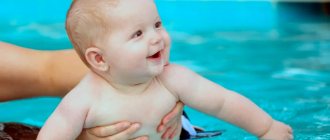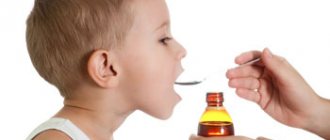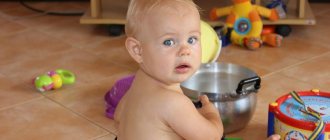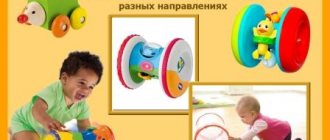What are fine motor skills
Fine motor skills are the consistency and precision of movements required to perform various actions with small objects using the hands and fingers and toes.
Fine motor skills are evident in children from an early age, when they are just learning to hold a toy. First, the development of the hand and finger movements occurs, then the formation of speech is formed. The formation of speech through the development of fine motor skills occurs due to the influence of nerve endings on the parts of the brain responsible for motor skills and speech, which are located next to each other.
In addition to the main function - speech development - fine motor skills influence the development of mental processes: thinking, memory, imagination, and the ability to navigate in space.
The benefits of developmental activities
Fine motor skills of the fingers are necessary for us in everyday life, for writing and work. But the functionality of these vital skills does not end there. Physiologists have long proven the close connection between children’s ability to perform small actions with their hands and their speech.
The sooner and better the child develops his fine motor skills, the sooner and clearer he will speak.
This close connection comes from the adjacent location of motor and speech centers in humans. When a child actively uses his fingers, nerve impulses are transmitted to the corresponding part of the brain and affect the nearby area responsible for the ability to speak.
Activities that develop fine motor skills will be useful not only for the child’s speech. In eastern countries they believe that on the pads of each finger we have special areas, by stimulating which we can influence absolutely all systems of our body.
Thus, the development of fine motor skills cannot but have a beneficial effect on the health and development of the baby. When should you start working with your child? Experts believe that the development of a baby’s fingers should begin from the first days .
- For your training to bear fruit, it must be done daily. It is not necessary to devote a lot of time to training - it is enough to start with 2-3 minutes while the child is in a good mood.
- Be sure to praise your baby for his achievements and encourage him with hugs and kisses.
- Make sure that the “props” are clean and sterile—babies in their first year of life tend to put everything in their mouth.
- Use objects of different sizes and textures for activities - this is how the baby will learn to control his hands and begin to explore the world and the properties of the objects that surround him.
Features of the development of fine motor skills
The ability to master fine motor skills in children does not develop on its own, that is, it does not have a hereditary factor. Adults play a great role in this matter; by their example, they involve the child in various activities and develop him systematically and purposefully. This hypothesis was first put forward by the Russian scientist Ivan Mikhailovich Sechenov. Subsequently, other scientists, doctors, teachers and specialists in various fields began to focus on this opinion as the key one.
Why is so much attention paid to the development of fine motor skills? For children, it means the development of basic skills and abilities.
- The child’s speech is formed, which contributes to a comfortable stay in the children’s group.
- The skills of various movements are developed. The child can play with toys independently without distracting an adult.
- Self-service skills are strengthened. The child gains the ability to independently hold a spoon, tie shoelaces, fasten buttons and other elements on clothes.
- Social connections are established with peers and adults, thanks to the ability to clearly express one’s thoughts and maintain dialogue.
- Readiness for schooling is formed through the combination of all the above reasons.
How to organize classes to develop fine motor skills at home?
You should approach the organization of activities with your child with imagination, starting from four basic principles:
- appropriate for the child’s age;
- child's preferences;
- game format of classes;
- constant dynamics.
From the previous paragraph, you learned that each age has its own level of development of fine motor skills, so you should not require a three-year-old to write capital letters - first you need to work on simpler elements with him.
Classes with a preschooler should not be long and tiring; if you notice that the child is bored, change the type of activity, dilute it with physical activity. Use in your classes the attributes of his favorite fairy tale and cartoon characters and favorite toys.
When planning activities with your child, remember that any progress is achieved only in dynamics. There will be no effect if you repeat the same exercises day after day - they need to be complicated, modified, combined. This will give a good impetus to development.
Helping around the house develops motor skills just as well as toys and special exercises. Wiping dust, washing and wiping dishes, sweeping seem like a chore only to an adult, but for a child this is a new exciting world in which he, like an adult, does important things.
It is important to be careful when drawing, sculpting or appliqueing. After all, in any work the result is important, the child should be proud of it in order to have an incentive to develop further. Help him bring his work to perfection.
Praise your successes, rejoice in small victories together, and don’t allow yourself unnecessary criticism. Support and approval are an important condition for the harmonious development of a child’s personality.
Games and exercises aimed at developing fine motor skills
The main activity of preschool children is play. We have selected a variety of games and exercises for you, among which you will definitely find something that suits you and your child.
- Folding toys. We place a transparent container in front of the child and place small toys separately. We suggest putting toys into the container with your right hand. Then we pour them back and ask you to repeat the same actions with your left hand.
- Games with cereals. In one container we mix two types of cereals, for example, rice and buckwheat. It is necessary for the child to put these cereals into different containers. You can complicate the game by adding other small objects to the mixture of cereals, for example, beads, buttons, pebbles.
- Exercise for tearing a sheet of paper. First, draw random lines on a sheet of paper. We invite the child to tear the paper with his hands exactly along the drawn lines. You can complicate the task by depicting geometric shapes.
- Page turning exercise. As your child gets older, instead of tearing a sheet of paper, you can suggest flipping through the pages of a favorite book. This exercise also promotes the child's early interest in reading literature.
- Smoothing out a crumpled sheet of paper. We place a crumpled sheet of paper in front of the child and offer to smooth it out so that not a single bent corner remains. You can complicate the exercise by suggesting that you do it with one hand, while holding the sheet with your thumb.
- Games with cubes. We give the task to assemble various figures from cubes: a tower, a house, a car, etc. Pyramid rings are also suitable for these games. The tasks become more complicated as the child masters the construction of simple figures.
- Games with lacing. Available in various options. It can also be an unnecessary shoe that you can let your child lace and unlace. It could also be a card with holes for laces. In any case, the actions with these objects are the same and pursue the same goal - to teach the child to cope with shoelaces on his own, since this skill will be useful to him in the future.
- Exercises with counting sticks. Please place geometric shapes on the table. First, the child completes tasks according to the model, and then independently according to verbal instructions. An additional advantage of this exercise is the formation of elementary mathematical concepts.
- Games with lids. Here you can offer various containers and vessels with lids that the child will independently twist and unscrew. And if you tell your child that you can’t cope without him, you will give him a motive to become your main assistant.
- Finger drawing in the sand. Invite your child to draw geometric shapes or any other design he wishes with all his fingers one by one. Interaction with sand also has a positive effect on the central nervous system.
From 7 to 9 months
The child’s “grasping” activity increases significantly from the second half of the year. He is interested in more and more new objects that he needs to touch, however, he gets bored with them quite quickly. Continue to develop your baby by inviting him to touch completely different objects - not only purchased expensive toys are suitable for this, but also absolutely any non-hazardous household items: new kitchen foam sponges, lids, clean food trays, clothespins, etc.
When playing with small objects, never leave your child alone.
Already, the baby’s arsenal is being replenished with new toys, with which he gradually learns to interact. You can buy the baby:
- a pyramid, which the baby will only disassemble for now;
- active developmental centers where you need to press, move, touch something;
- rubber squeakers that need to be squeezed in the palm of your hand;
- textile cubes;
- floating bath toys.
Activities to develop fine motor skills in children
In addition to games to develop fine motor skills, you should engage in a variety of activities that children will undoubtedly enjoy:
- modeling from plasticine, clay or dough;
- drawing or coloring with paints, pencils, crayons;
- construction from construction kits, paper, cubes;
- crafts made from paper, natural or waste materials;
- stringing beads and buttons on a string;
- putting together a mosaic;
- ball games;
- peeling fruits, such as tangerines;
- working with special manuals.
How to develop fine motor skills at an early age?
Early age (from 1 year to 3 years) is the most fertile period for the development of the hand and speech activity. It is characterized by the fact that the hand becomes one of the main tools in understanding the world around us. To get acquainted with an object, the baby must touch it, feel it, and begin to interact with it. And for an adult to correctly name the object, tell about the shape, color, purpose. Therefore, parental activity in educating the child is simply necessary. With proper development, children perform many hand actions, which are then improved in preschool age:
- learn to play with small toys;
- manipulate objects (from 2 to 3 - 4 actions: roll, throw, put on top of each other, wrap);
- trying to fasten buttons;
- lace up shoes;
- pour water from container to container;
- eat independently with a spoon;
- perform hygiene procedures (washing, brushing teeth, wiping hands and fingers).
There are many games and activities, both modern and classic, that are ideal for developing fine motor skills.
Important: parents need to select games that are appropriate to the child’s age and level of development at this stage, since in parallel with motor skills, memory, attention, thinking, speech are improved, and intelligence is formed.
Games for kids
"Magic bag"
This classic exercise trains fine motor skills, sensory sensations, speech and thinking well. An adult prepares a bright bag into which he puts small objects made of various materials: wood, plastic, fabric, etc. The child finds the object by touch, and the adult asks to name it. Then he looks at it together with the baby, asking: what is the name of the object, what is it made of, how can you play with it.
"Magic Picture"
Just like the previous exercise, the game is aimed at developing motor skills, sensory skills, and developing imagination. An adult offers the baby laces of various lengths and colors from which they can make figures. It’s good if the parent and the child post a whole picture: a familiar landscape, toys, animals, dishes. The baby can build various shapes: circles, ovals, triangles, paths.
"Gift for a Doll"
In object play, the adult encourages the child to repeatedly act with homogeneous elements (plastic or wooden beads), training the small muscles of the hand, developing imagination and speech. The child should string large beads onto a thick cord. The monotonous exercise is brightened up with an interesting plot: “let’s give beads to the doll for her birthday.”
The kitchen is a place for motor skills!
At an early age, children love to play in places where entry is closed to them. Many mothers are afraid to let their children into the kitchen, worried about the safety of the child. But the kitchen can become a place not only for cooking, but also a place for training children. Having prepared a safe space and necessary supplies, parents can organize games that are good for developing fine motor skills:
- manipulation of cereals, beans (pour from one plastic jar into another, counting beans, drawing on cereals);
- dough modeling;
- pouring water from one vessel to another (playing “ships”);
- washing plastic dishes;
- manipulation with napkins, paper towels (crumple like a snowball; tear like snowflakes);
- laying out teaspoons;
- closing and opening plastic containers.
A caring mother will always find an opportunity to use available tools for the development of her baby!
Toys for developing fine motor skills
What could be better for a child than a new toy? Only a toy that contributes to his all-round development.
- Massage relief mats for feet. Ideal to use after waking up to tone the body. You can purchase a puzzle mat that he can assemble and disassemble on his own. If you want to focus on developing cognitive skills, you can purchase a mat with numbers or letters.
- Magnets. Place the magnets on the refrigerator or a special magnetic board. The child will definitely become interested in them and will independently move them across the surface. Depending on the purpose pursued, you can purchase magnets of various shapes, for example, in the form of numbers.
- Kinetic sand. Tactilely pleasant not only for children, but also for adults. This sand does not stain your hands, so it will become a favorite toy for children and an assistant for adults.
- Easel for drawing. There are options for easels on which you can draw on both sides: on one side with special crayons, and on the other with paints.
- Massage balls. Ideal for finger play. Thanks to the spikes, they actively affect the areas of the palms and fingers.
- Designers. You can choose a set from any manufacturer. You should focus on safety for the child, appropriateness for age and gender. In addition to the development of fine motor skills, it stimulates the development of modeling and design skills.
- Finger Theater. Combines the possibilities for the comprehensive development of the child. In addition, it improves the expressiveness of speech, memory, imagination, and acting skills. This option should definitely be used if you notice that one hand is more developed than the other.
- Busyboard. Recently, a popular aid for the development of fine motor skills. It is a wooden structure onto which various objects are attached on both sides. These can be lacing, caps, locks, switches, gears, etc. This toy will help parents, as the baby can play with it independently and safely.
How does a child develop gross motor skills?
This term refers to the movements of large parts of the body - arms, legs, torso, head. Typically, these skills are divided into two groups - motor skills (crawling, walking, running, jumping, swimming, etc.) and object control (such as the ability to throw, catch objects, hit with hands and feet).
From birth to 2 months
Gross motor skills in very young children are not developed. All movements of a newborn are either involuntary or obey innate reflexes. For example, from the first hours of life, a baby turns its head to the side when placed on its stomach - this is a protective reflex so as not to suffocate. The baby's first success in developing gross motor skills is usually observed at about two months - he begins to raise his head and holds it in this position for several seconds.
From 2 to 6 months
At about 2 months, the baby lying on his back begins to actively jerk his legs. Nothing fancy, just gross motor activities to help prepare for crawling. By four months, the child learns to hold his head, and in a sitting position he is able to control it for a long time. True, the baby still does not know how to sit on his own - only with support. A little later, the baby begins to rise in his arms from a position lying on his stomach, and also actively rolls over from his back to his stomach and back.
From 6 to 12 months
The baby tries to sit up. At first, these gross motor skills exercises are difficult for him: for balance, he leans his body forward and often falls. At about 8 months, the child begins to crawl on his belly, without lifting his stomach from the surface, first backwards, and only later forwards. At 10 months, the baby can already sit up straight and not fall, masters crawling on all fours and even tries to stand up while holding onto a support.
From one year to two
At about a year old, one of the most important events in the development of gross motor skills in young children occurs - the baby begins to walk! He no longer wants to sit in the playpen and wants to constantly move. Then the child learns to carry toys in his hands and step over small obstacles (not always successfully). At about a year and a half, a toddler can run a couple of meters and take a few steps back. By the age of two, the baby masters complex gross motor skills of the arms and legs - he can throw and kick objects and sometimes even hits the target. If there is something to grab onto, a two-year-old can climb stairs without having to get down on all fours.
From two to five years
Gross motor skills in children of primary preschool age quickly improve, and at three years old the baby jumps and runs a lot - simply because he likes it. By the age of four, a child learns to walk down stairs almost like an adult; by five, his movements become smooth and his coordination is good enough to play many sports. Some gross motor skills may not be ideal in preschool, but this is not surprising - a person does not reach peak physical fitness until the ages of 18–26.
At what age should you start developing fine motor skills?
You can develop and train the motor skills of your fingers from infancy, starting from 6-7 months of age through stroking the child’s palm, bending and straightening the fingers.
It is important to pay attention to hand motor skills for at least a few minutes every day.
- For children from nine months of age, large objects should be selected, for example, beads or pyramid rings.
- At the age of 1 year, you can organize games with natural materials: sand, clay, cones, pebbles, etc.
- After 2 years, the baby will happily perform finger gymnastics together with an adult. Saying various nursery rhymes simultaneously with hand movements will help teach hand and tongue coordination. And it will also be better remembered by the child himself.
- After 3 years, you should resort to exercises with paper. Usually by these years the child has mastered the skill of working with scissors, so it becomes possible to model appliqués.
- And from the age of 4-6 years, the skill of origami is mastered as one of the most difficult types of games with paper.
No matter what age you are developing fine motor skills in children, it is necessary to organize this activity so that it brings not only benefit to the child, but also pleasure.
How to develop fine motor skills in a child?
Every person is constantly faced with the task of buttoning and unfastening the buttons on their clothes, tying their shoelaces, combing their hair, brushing their teeth, eating with cutlery and not getting everything dirty - all these skills are not only useful in adult life, but also help little fingers become larger. strong and dexterous. We will tell you about other activities that develop fine motor skills, but first of all, motivate your child to independently perform such routine tasks.
Tip #1: Encourage your child to play with a sensory box
From what age: from 1 year or as soon as the child understands that objects from the box should not be put into the mouth.
Sensory Box is a very simple game that helps develop children's fine motor skills. You need to take a large container or basin, fill it with clean sand or cereal and put in several small objects - pebbles, cones, figurines, etc. A child under one year of age enjoys digging into the litter himself, as well as burying and unearthing objects. After a while, when the baby gets bored with this activity, you can arrange a toy garden in a box, making beds and planting acorns or twigs in them. Even later, the box will become a stage for toy stories with figures of people and animals, houses and cars.
This toy helps both develop motor skills in a child of 9–10 months and improve the movements of a baby’s fingers at the age of 2–3 years and even older. She grows up along with the baby - you just need to add new items to the box and make the game task a little more difficult.
Tip No. 2. Make a busy board for your baby
From what age: from 1 year.
Why develop fine motor skills with the help of expensive toys, if you can make an almost free simulator from what you have on hand? A busy board is a piece of plywood or furniture board to which switches, buttons, latches, hinges, wheels, and shoe Velcro are securely attached. Simply put, everything that can be pressed, pulled, twisted, etc. If the baby’s actions have feedback, for example, when a button is pressed, a light comes on or a bell rings, his delight will be limitless.
Do not forget that when designing a bodyboard, you need to carefully check all devices for sharp corners, tight springs and other dangers. If everything goes well, this homemade toy will provide major benefits for your child's fine motor development.
Tip #3: Paint with finger paints
From what age: from 1 year, but it is possible earlier if the baby is interested in this activity.
As the name implies, you don’t need any equipment to paint with such paints, only the child’s own fingers. Don't be afraid that your baby may eat from bright jars.
Of course, he will do just that, but finger paints are deliberately made tasteless and harmless.
If you are an economical and at the same time creative person, you can try making your own finger paints. Homemade paints are also great for developing fine motor skills, but they usually turn out duller and don’t wash well from clothes, which the baby will inevitably get dirty in the process. Write down the recipe: vegetable oil as a base, flour or starch as a thickener, food coloring for color and salt so that it is not tasty for the child to eat.
Tip No. 4. Look at what educational toys are available in children's stores.
From what age: read the instructions on the package.
When you are going to buy your baby another toy, first of all answer yourself the question: will it be useful for the development of fine motor skills? Maybe not another doll, but a coloring book or plasticine? Maybe not a finished car, but a construction set to assemble it? Glue, sculpt, draw, cut out, fold - in general, give preference to those entertainments that help the baby master and improve his skills.
Tip No. 5. Teach your child to write with a pen
From what age: as soon as the baby learns to read.
Thanks to gadgets, modern children early learn to read and type words on a keyboard, but do not see any benefit in the ability to write with a pen. But in vain, because this skill has always been used as one of the best ways to develop hand motor skills. Writing improves dynamic grip because all the muscles in the hand and wrist work to draw each letter.
Try to come up with some creative ways to make your child want to learn to write. For example, explain that without this they will not be accepted into school (not entirely true, but the ability to write in the first grade is really an advantage) or say that Grandfather Frost accepts requests for gifts only in handwritten form.
conclusions
In the age of technological progress and children’s early adoption of phones, tablets and computers, other aspects of child development are regressing. And, first of all, speech suffers. The relationship between fine motor skills and speech, as well as the development of mental processes, has already been established.
Systematic work on the development of fine motor skills is necessary throughout the preschool period, since by the age of seven the areas of the brain responsible for its development have already been formed. A child going to school should be prepared for new loads, in particular to master writing skills, and not learn to hold a pen or pencil correctly. Lack of development of basic skills can lead to unstable self-esteem, inability to build social connections, and poor academic performance.
The children's network will be happy to help develop your child's fine motor skills. A developing subject-spatial environment, highly qualified specialists who love their work with all their hearts, and cozy groups will not leave anyone indifferent.
General developmental classes or specialized programs - the choice is yours. Contact us if your goal is to raise a developed, open, free, inquisitive person.










